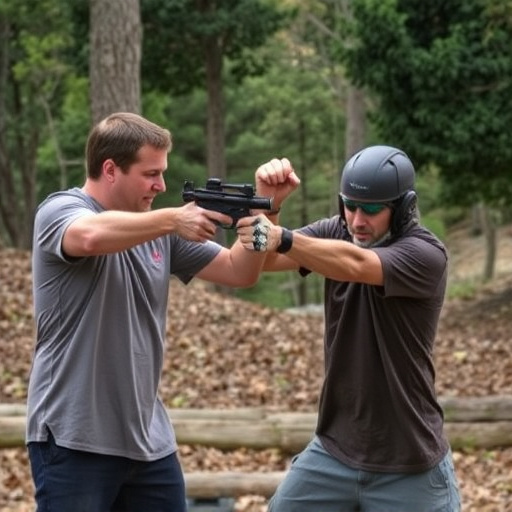Self-defense stun guns, especially projectile and contact types, are gaining popularity among college students for their non-lethal protection on campus or in unfamiliar areas. Key features to consider include range, power output in joules, compact size/weight, bright LED flashlights, and reliability from reputable brands, all enhancing the likelihood of effective use during self-defense situations. Matching these stun guns to personal safety needs and local regulations ensures legal and safe carrying for college students' peace of mind.
In today’s digital era, self-defense options evolve with technological advancements. Among them, projectile and contact stun weapons offer unique capabilities for individuals seeking protection, particularly college students navigating bustling campuses. Understanding the nuances between these two types of stun devices is crucial for making an informed decision. This article explores the dynamics of projectile and contact stun weapons, focusing on self-defense considerations specifically tailored to college students’ needs, and provides key factors to evaluate when choosing the right stun gun.
- Understanding Projectile and Contact Stun Weapons
- Self-Defense Considerations for College Students
- Choosing the Right Stun Gun: Key Factors to Evaluate
Understanding Projectile and Contact Stun Weapons
In the realm of self-defense tools, stun weapons have emerged as a popular choice, especially among college students seeking effective yet legal protection. These devices can be categorized into two primary types: projectile and contact stun weapons. Projectile stun guns, such as tasers, fire small probes that deliver an electric shock upon impact with the target. This method provides a non-lethal way to incapacitate an assailant from a distance, making it ideal for self-defense scenarios where immediate escape might be challenging.
Contact stun weapons, on the other hand, make direct contact with the attacker to deliver a powerful electric current. These include stun batons and electroshock devices designed to fit in pockets or purses. Unlike projectile weapons, they require physical interaction but offer the advantage of portability and discretely protecting oneself in close-quarters situations. Understanding these distinctions is crucial when choosing between a self-defense stun gun for college students, ensuring the device aligns with personal safety needs and local regulations.
Self-Defense Considerations for College Students
College students facing potentially dangerous situations on campus or while navigating unfamiliar areas can consider carrying self-defense stun guns as a viable option. These compact and easily concealed devices offer a non-lethal way to incapacitate an attacker, providing precious time for escape or assistance. Self-defense stun guns are particularly attractive for students due to their discreet nature; they blend into personal items like wallets or keychains, making them readily accessible when needed most.
When choosing a self-defense stun gun tailored to college students’ needs, several factors come into play. First, consider the device’s power output; higher voltage typically results in faster muscle paralysis and immobilization. Second, look for models featuring bright LED flashlights, which disorient attackers and signal distress. Additionally, lightweight and durable designs ensure ease of carrying during daily routines. Remember to familiarize yourself with local laws regarding stun guns to avoid any legal complications.
Choosing the Right Stun Gun: Key Factors to Evaluate
When considering self-defense stun guns, especially for college students, several key factors come into play to ensure effectiveness and safety. First, range is a crucial consideration. Stun guns with a longer range offer more time to escape or de-escalate a situation, which can be vital in crowded campus areas or high-stress scenarios. Additionally, power output measured in joules, determines the stun gun’s effectiveness. A higher joule rating generally translates to a more powerful stun, but it’s essential to balance this with ease of use and carrying comfort.
Size and weight are also significant factors for students who might need to carry their stun gun on person or keep it in a dorm room. Smaller, lighter models are easier to conceal and less cumbersome, enhancing the likelihood that they’ll be used when needed. Moreover, reliability is paramount. Students should opt for reputable brands known for consistent performance, ensuring the stun gun will function when called upon during self-defense situations.
When it comes to self-defense options for college students, considering a stun gun can be a crucial decision. Projectile and contact stun weapons offer distinct advantages in various scenarios. For those seeking a non-lethal option with a wider range, projectile stun devices excel in delivering power from a distance. Contact stun guns, on the other hand, provide immediate control and are ideal for close-quarters situations. Understanding these differences is essential when choosing the right self-defense stun gun, ensuring students are equipped to navigate potential threats effectively.
